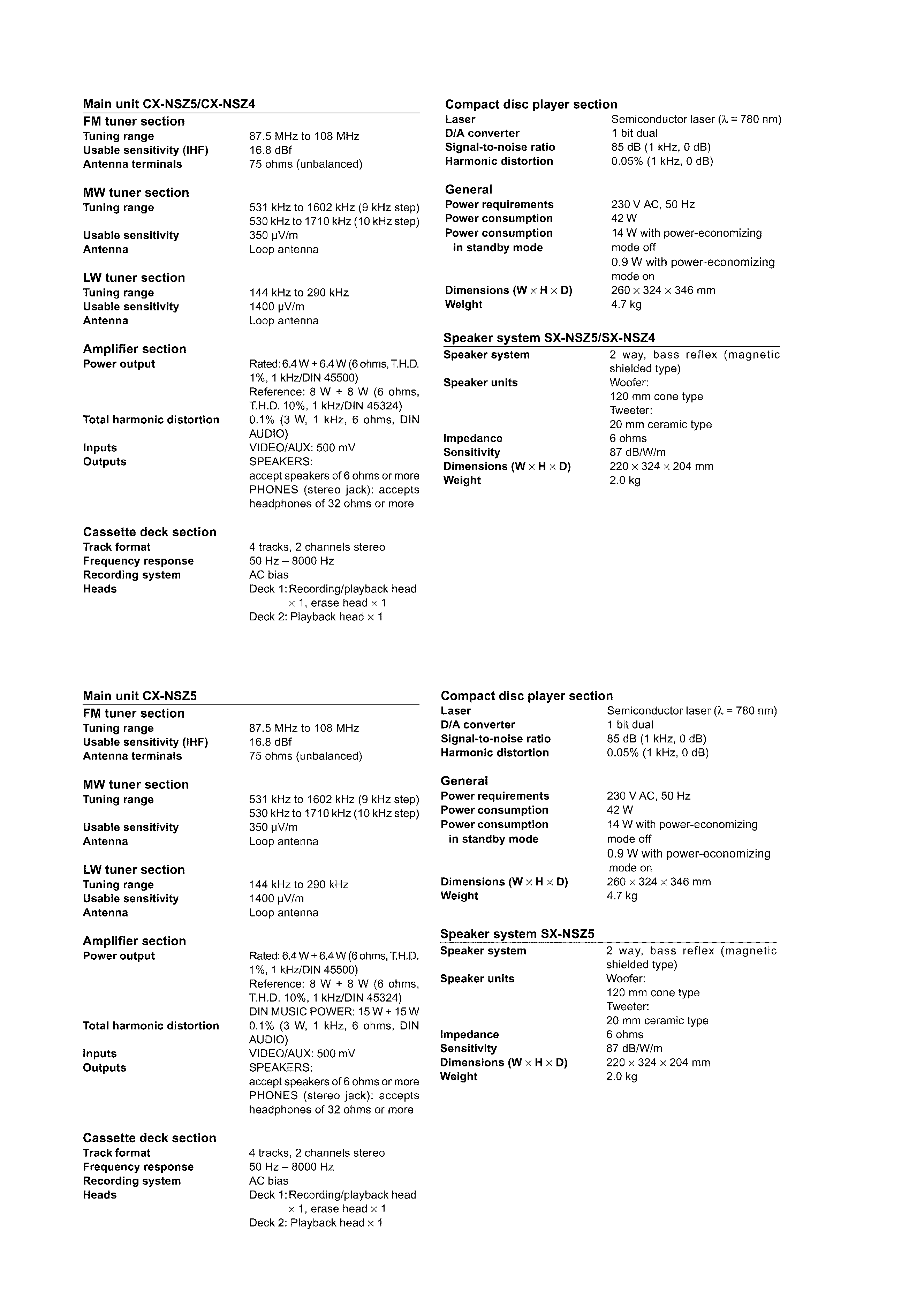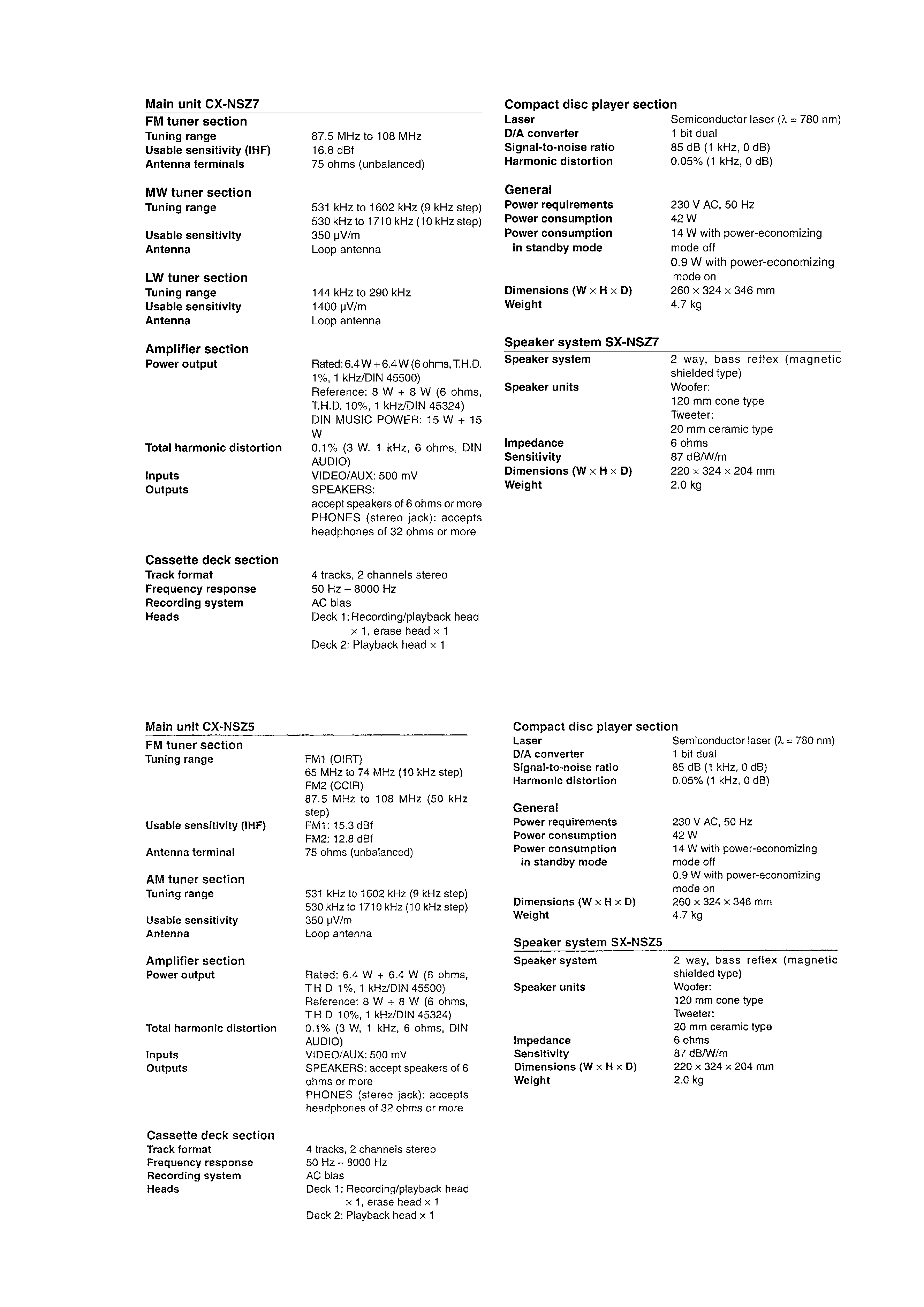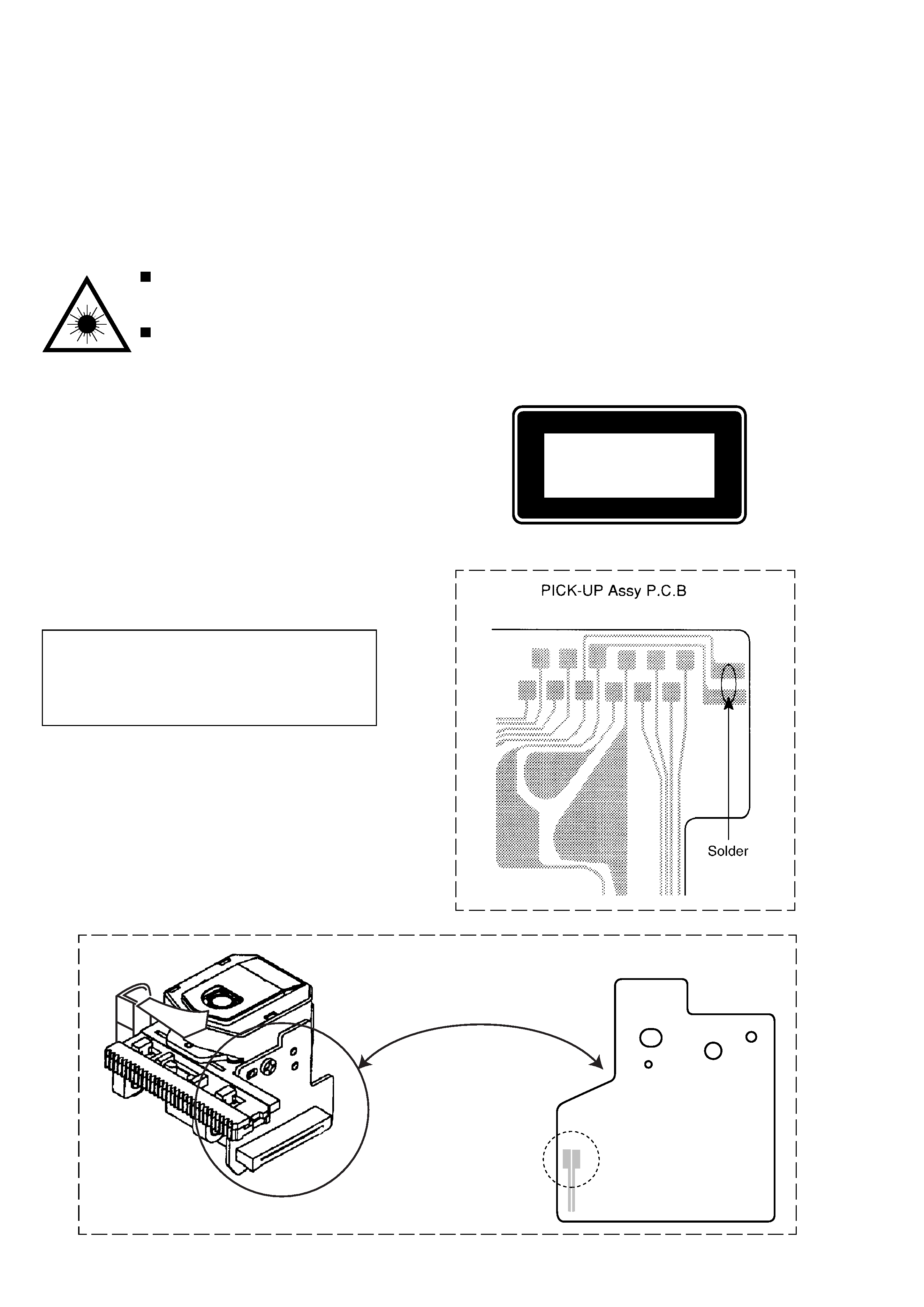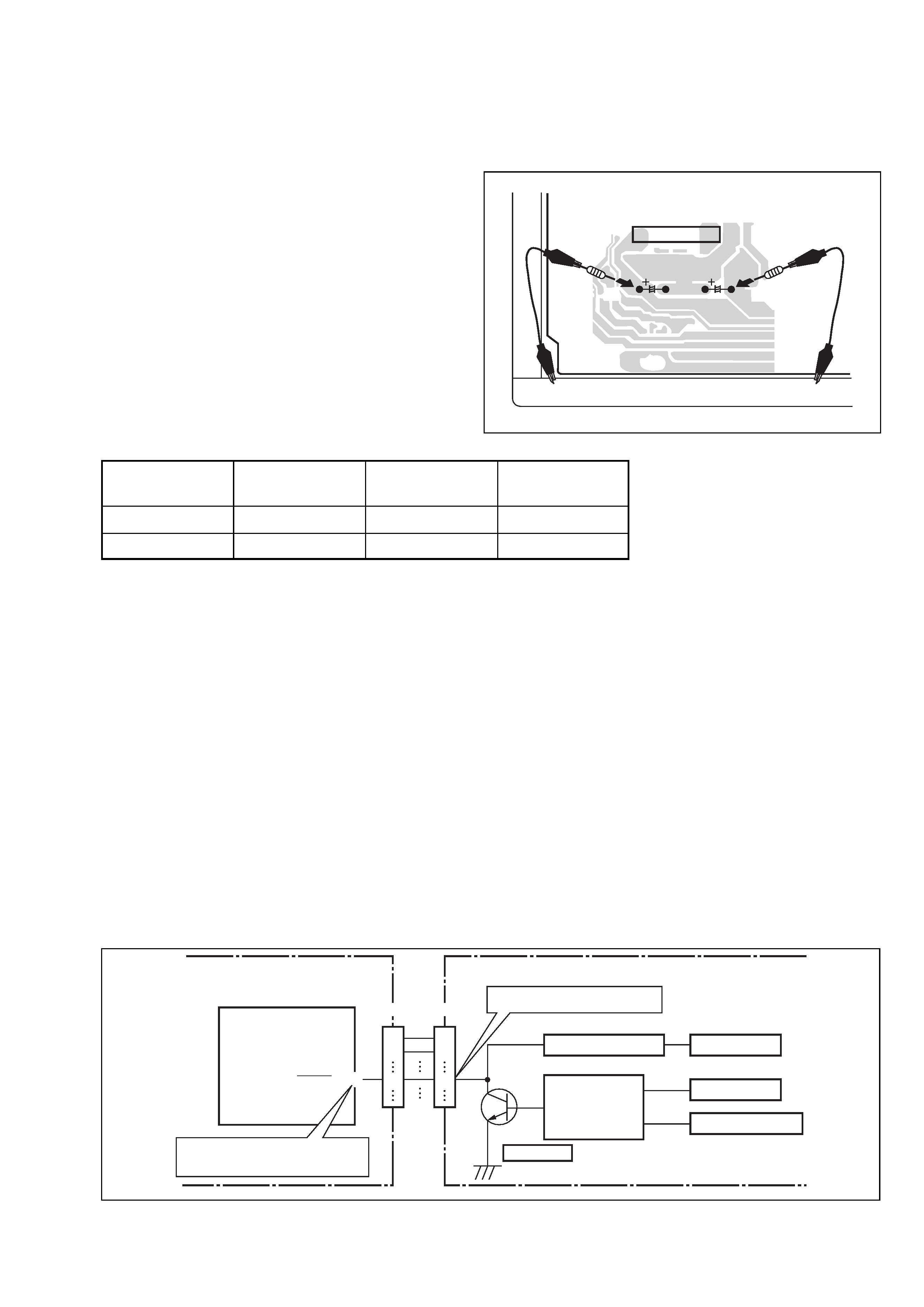
SERVICE MANUAL
DA
TA
BASIC CD MECHANISM : AZG-1 ZA3RNM
COMPACT DISC
STEREO CASSETTE RECEIVER
NSX-SZ4
NSX-SZ5
NSX-SZ7
S/M Code No. 09-006-429-1N1
K
K EZ V
EZ
BASIC TAPE MECHANISM : ZZM-2 PR1NM
NSXSZ4
RCZAS02
SYSTEM
CD
CASSEIVER
REMOTE
CONTROLLER
CXNSZ4
SPEAKER
SXNSZ4
NSXSZ5
CX-NSZ5
SXNSZ5
NSXSZ7
CX-NSZ7
SXNSZ7
· If requiring information about the CD mechanism, see Service Manual of AZG-1,
(S/M Code No. 09-001-335-3NC).
RCZAS17

2
SPECIFICATIONS
K MODEL (NSX-SZ4/SZ5)
EZ MODEL (NSX-SZ5)
· Design and specifications are subject to change without
notice
.
· Design and specifications are subject to change without
notice
.

3
EZ MODEL (NSX-SZ7)
· Design and specifications are subject to change without
notice
.
V MODEL (NSX-SZ5)
· Design and specifications are subject to change without
notice
.

4
PROTECTION OF EYES FROM LASER BEAM DURING SERVICING
VAROITUS!
Laiteen Käyttäminen muulla kuin tässä käyttöohjeessa mainit-
ulla tavalla saattaa altistaa käyt-täjän turvallisuusluokan 1 ylit-
tävälle näkymättömälle lasersäteilylle.
VARNING!
Om apparaten används på annat sätt än vad som specificeras i
denna bruksanvising, kan användaren utsättas för osynling
laserstrålning, som överskrider gränsen för laserklass 1.
Caution: Invisible laser radiation when
open and interlocks defeated avoid expo-
sure to beam.
Advarsel:Usynling laserståling ved åbning,
når sikkerhedsafbrydere er ude af funktion.
Undgå udsættelse for stråling.
CAUTION
Use of controls or adjustments or performance of procedures
other than those specified herein may result in hazardous
radiation exposure.
ATTENTION
L'utilisation de commandes, réglages ou procédures autres que
ceux spécifiés peut entraîner une dangereuse exposition aux
radiations.
ADVARSEL!
Usynlig laserståling ved åbning, når sikkerhedsafbrydereer ude
af funktion. Undgå udsættelse for stråling.
This Compact Disc player is classified as a CLASS 1 LASER
product.
The CLASS 1 LASER PRODUCT label is located on the rear
exterior.
This set employs laser. Therefore, be sure to follow carefully the
instructions below when servicing.
WARNING!
WHEN SERVICING, DO NOT APPROACH THE LASER EXIT
WITH THE EYE TOO CLOSELY. IN CASE IT IS NECESSARY TO
CONFIRM LASER BEAM EMISSION. BE SURE TO OBSERVE
FROM A DISTANCE OF MORE THAN 30cm FROM THE
SURFACE OF THE OBJECTIVE LENS ON THE OPTICAL
PICK-UP BLOCK.
CLASS 1
KLASSE 1
LUOKAN 1
KLASS 1
LASER PRODUCT
LASER PRODUKT
LASER LAITE
LASER APPARAT
Precaution to replace Optical block
1) After the connection, remove solder shown in
the figure below.
Body or clothes electrostatic potential could ruin
laser diode in the optical block. Be sure ground
body and workbench, and use care the clothes
do not touch the diode.
Solder
ZA8 MODEL
ZA3/ZA4 MODEL (KSS-213F)

5
NOTE ON BEFORE STARTING REPAIR
Charging voltage (V)
Discharging
Rated power (W)
Parts number
(C101, 102)
resistor (
)
25-48
100
3
87-A00-247-090
49-140
220
5
87-A00-232-090
Note: The reference numbers (C101, C102) of the electrolytic capacitors can change depending on the models. Be sure to check the
reference numbers of the charging capacitors on schematic diagram before starting the discharging work.
2. Check items before exchanging the MICROCOMPUTER
Be sure to check the following items before exchanging the MICROCOMPUTER. Exchange the MICROCOMPUTER after confirming
that the MICROCOMPUTER is surely defective.
2-1. Regarding the HOLD terminal of the MICROCOMPUTER
When the HOLD terminal (INPUT) of the MICROCOMPUTER is "H", the MICROCOMPUTER is judged to be operating correctly.
When this terminal is "L", the main power cannot be turned on. Therefore, be sure to check the terminal voltage of the HOLD
terminal before exchange.
When the MICROCOMPUTER is not defective, the HOLD terminal can also go "L" when the POWER AMPLIFIER has any
abnormalities that triggers the abnormality detection circuit on the MAIN C. B. that sets the HOLD terminal to "L".
· Good or no good judgement of the MICROCOMPUTER
1 Turn on the AC main power.
2 Confirm that the main power is turned on and the HOLD terminal of the MICROCOMPUTER keeps the "H" level or not.
3 When the HOLD terminal is "L" level, the abnormality detection circuit is judged to be working correctly and the
MICROCOMPUTER is judged to be good.
1. Forced discharge of electrolytic capacitor of power supply block
When repair is going to be attempted in the set that uses relay circuit in the power supply block, electric potential is kept charged across
the electrolytic capacitors (C101, 102) even though AC power cord is removed. If repair is attempted in this condition, secondary defect
can occur.
In order to prevent the secondary trouble, perform the following measures before starting repair work.
Discharge procedure
1 Remove the AC power cord.
2 Connect a discharging resistor at an end of lead wire that
has clips at both ends. Connect the other end of the lead
wire to metal chassis.
3 Contact the other end of the discharging resistor to the
positive (+) side (+VH) of C101. (For two seconds)
4 Contact the same end of the discharging resistor as step 3
to the negative (-) side (-VH) of C102 in the same way.
(For two seconds)
5 Check that voltage across C101 and C102 has decreased
to 1 V or less using a multimeter or an oscilloscope.
Select a discharging resistor referring to the following table.
Fig-1
MAIN C.B
D101
C101
C102
22
34
Fig-2-1
MICROCOMPUTER
FRONT C.B
MAIN C.B
OVER LOAD DET
DC DET
Q110
POWER AMP
POWER AMP
POWER SUPPLY
HOLD
HOLD SW
(
AC DET
PIN101 CON601
1
2
*
1
2
*
In some models, it is PIN
(.
PIN number is different
depending upon microprocessor.
